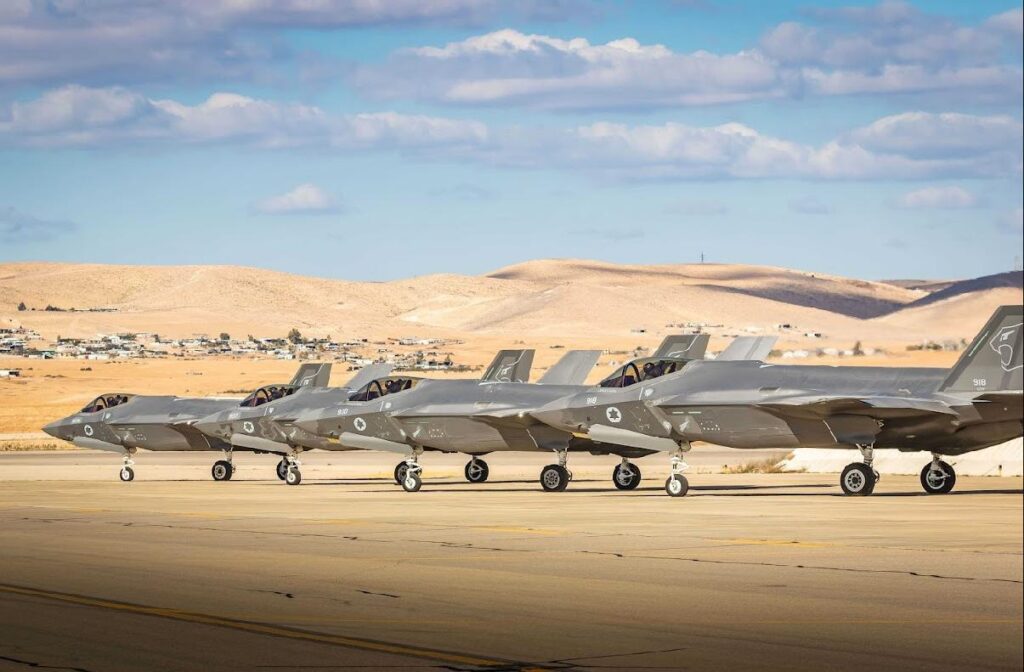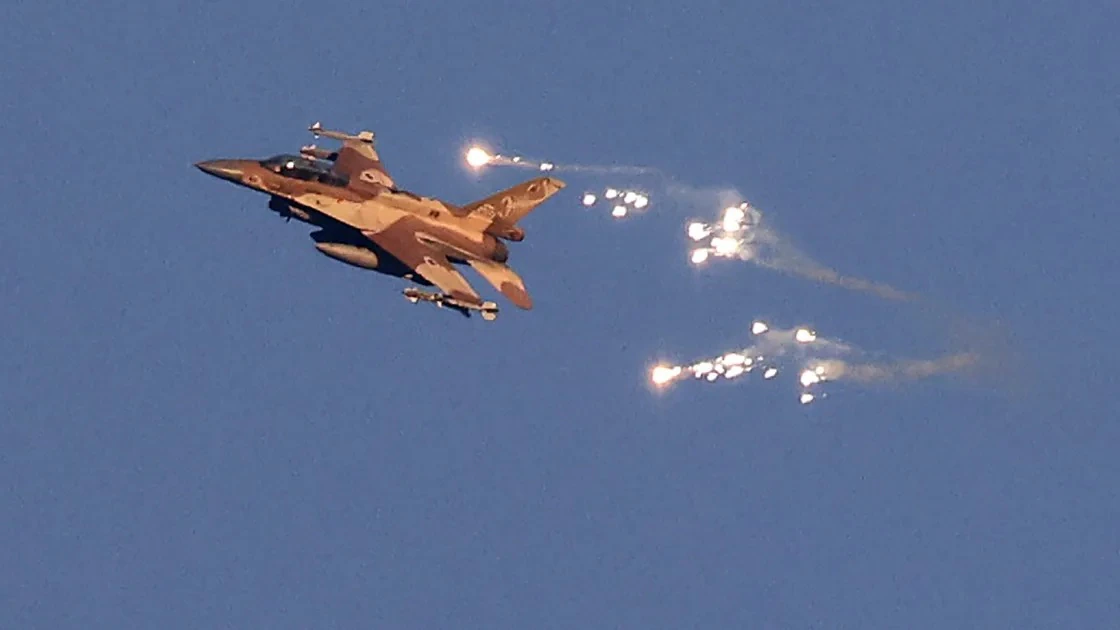Tehran / Jerusalem : In what military analysts are calling one of the most audacious and coordinated aerial assaults in recent history, the Israel Defense Forces (IDF) launched a massive preemptive strike on Iran, targeting its nuclear enrichment sites, ballistic missile facilities, air defense systems, and key Revolutionary Guard Corps (IRGC) leadership compounds. The unprecedented operation — reportedly involving over 200 fighter jets and aerial support units — unfolded over the course of a single night and spanned multiple regions across Iran.

Operation Details: Precision and Shock Across the Iranian Sky
According to high-level military sources, the operation began shortly after midnight local time and lasted several hours, with synchronized strikes launched from Israeli airbases, forward-operating refueling stations, and naval air assets stationed in the Persian Gulf.
The IDF’s F-35I “Adir” stealth fighters, F-16I Sufa multirole jets, and upgraded F-15I Ra’am heavy strike aircraft were supported by electronic warfare units, drone swarms, AWACS, and aerial refueling tankers, allowing for deep penetration into Iranian airspace.
“This was a multi-domain, multi-front air campaign — the scale of which Iran was not prepared for,” said Brig. Gen. (Ret.) Amos Tzur, a former Israeli Air Force operations commander.
Primary Targets: Iran’s Nuclear Sites Hit Hard
Among the confirmed high-value targets were:
Natanz Nuclear Facility – Iran’s primary uranium enrichment site was reportedly struck with deep-penetrating bunker-buster munitions, causing a suspected chain reaction in underground centrifuge halls.
Fordow Fuel Enrichment Plant – The deeply buried facility beneath a mountain near Qom was hit by multiple bunker-busting bombs, possibly delivered by F-35Is that evaded radar detection.
Arak Heavy Water Reactor Complex – Satellite imagery shows significant fire and secondary explosions, suggesting a successful strike.
Parchin Military Complex – Known for nuclear-related weapons testing and missile development, this site witnessed multiple precision strikes.
Esfahan Aerospace Command Center – The hub of Iran’s missile command structure and drone operations was heavily targeted.

Command & Control Decapitation: High-Ranking IRGC Figures Killed
Reports from opposition and intelligence-linked sources inside Iran confirm that several senior IRGC commanders, including officers linked to Iran’s nuclear weapons program and air defense network, were killed in the strikes. Among the casualties:
Brig. Gen. Ali Hosseini, a key coordinator of Iran’s ballistic missile program.
Gen. Reza Khosravi, head of drone warfare operations.
Mohammad Shirazi, a top aide to Supreme Leader Ayatollah Khamenei and liaison with the IRGC Aerospace Force.
Unconfirmed sources suggest that a command bunker near Mashhad, believed to host senior nuclear program officials, was completely destroyed, with no survivors.
Suppression of Air Defenses: Radar Blindness and EW Domination
Iran’s Russian-made S-300 and domestically developed Bavar-373 air defense systems were reportedly blinded or destroyed in the early minutes of the attack. Israeli drones conducted decoy runs, while electronic warfare aircraft jammed radar and communications.
Cyber units, reportedly linked with Unit 8200, conducted pre-emptive digital sabotage, shutting down power grids and disrupting military coordination networks.
“Iran was paralyzed. The combination of cyber and kinetic strikes overwhelmed their command-and-control within minutes,” said Dr. Eyal Ben-Hanan, a cyber warfare analyst.
Coordinated Regional Support & Airspace Corridors
Though Israel has not officially acknowledged foreign cooperation, defense experts suggest that multiple regional airspace corridors were used:
Saudi and Jordanian airspace may have been covertly opened for Israeli jets using radio silence and stealth.
Azerbaijan, long suspected of hosting Israeli intelligence assets, could have provided northern launch pads or emergency airstrips.
U.S. naval forces in the Persian Gulf reportedly went into high alert but did not intervene — suggesting tacit awareness or deconfliction coordination.
Strategic Goals: Delay, Deter, or Destroy?
The operation appears to serve three strategic objectives:
- Immediate disruption of Iran’s nuclear breakout capability, estimated to be within weeks.
- Elimination of top IRGC and nuclear-linked personnel, undermining institutional continuity.
- Projection of deterrence amid regional escalations involving Hezbollah, Syria, and Houthi proxies.
🗣️ Global Reaction: Shockwaves Across Diplomacy
Iranian Government Response: Tehran has vowed a “devastating response.” In a rare moment of televised vulnerability, Supreme Leader Ayatollah Ali Khamenei appeared visibly shaken, calling the attack “an act of war.”
U.S. Statement: The White House, while expressing concern about “escalation,” stopped short of condemning Israel. National Security Advisor stated: “Israel has the right to defend itself from existential threats.”
Russia and China: Strongly condemned the strikes and warned of “regional destabilization.”
European Union: Called for an emergency UN Security Council session and urged restraint on all sides
What Happens Next?
With the IRGC reeling, nuclear ambitions set back by years, and a new level of uncertainty in the Middle East, the aftermath of this air campaign may mark a turning point in regional power balances.
Military analysts are split:
Some view it as a surgical, one-off operation to cripple Iran’s nuclear threshold capability.
Others fear it could provoke massive retaliatory strikes by Iranian proxies, including Hezbollah, PMF militias in Iraq, and Houthis targeting Israeli and U.S. interests.
Israel has placed its Iron Dome, Arrow, and David’s Sling missile systems on full alert, while IDF reserves have been partially mobilized.




